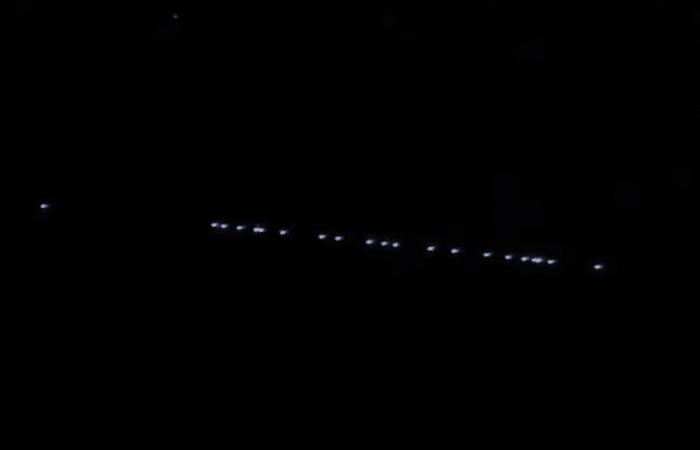Sunday October 27, around 6:30 p.m., residents of Franche-Comté were surprised to see Starlink satellites from the company SpaceX passing through the sky. Why can we see them, what are they for? Are they harmful? We answer these questions.
The essentials of the day: our exclusive selection
Every day, our editorial team reserves the best regional news for you. A selection just for you, to stay in touch with your regions.
France Télévisions uses your email address to send you the newsletter “The essentials of the day: our exclusive selection”. You can unsubscribe at any time via the link at the bottom of this newsletter. Our privacy policy
About twenty points of light following one another in the sky. This is what several residents of Franche-Comté like Isabelle have noticed. As she left a cinema in Besançon (Doubs) on Sunday October 27, she looked at the sky and saw the Starlink satellites with her companion. “We were on the Republic Bridge. We looked up and saw Santa’s sleigh,” testifies this resident of Doubs.
Starlink satellites seen from the sky of Besançon (Doubs).
•
© photo provided by Ski Mimikov
According to her, the satellites looked like a train. La Bisontine was surprised by the speed at which these satellites were moving.
Certain factors can restrict the visibility of satellites such as their orientation, and the type of satellites, or even light pollution. Certain satellite passages are sometimes simply invisible.
Starlink is a satellite Internet service provider from Elon Musk's company SpaceX. It relies on a constellation of several thousand satellites using low Earth orbit to provide a high-speed internet connection anywhere on the planet. It would be intended in particular for less densely populated areas which do not have access to high-speed internet. These satellites orbit around 450 km above sea level.
Starlink is the first satellite internet provider to choose low Earth orbit over geostationary orbit. Low Earth orbit reduces the delay in transmitting information. The constellation has been under deployment since 2019. Currently, 6,000 Starlink satellites are in operation. Ultimately, the constellation should be based on 42,000 satellites.
A study published in the journal Geophysical Research Letters on June 11, 2024 talks about the still unknown consequences of the multiplication of satellites. This mainly concerns their end of life. When a satellite in low orbit is at the end of its life, it uses its remaining fuel to descend toward Earth and burn up in the atmosphere thanks to air friction. According to this study, this technique would destroy the ozone layer.
A Starlink satellite seen from space.
•
© LA NACION / MAXPPP
As they disintegrate in the atmosphere, the satellites transform into nanoparticles including aluminum oxide. This chemical compound would destroy the ozone layer. This phenomenon had already been observed in the past, but the concept of a megaconstellation in low orbit like Starlink would have a heavy impact. Starlink satellites have a lifespan of five years according to SpaceX and three years according to astrophysicist Eric Lagadec.
According to this study, in 2022, the dispersion of satellites was responsible for the 29.5% increase in aluminum in the atmosphere. This represents 17,000 tonnes of aluminum spread between 50 and 120 kilometers above the ground.
According to an NCRS study published on October 9, 2024, Starlink satellites emit unintentional radio signals that can harm astronomical observations. An already known situation, but which is getting worse with new generation satellites. Indeed, the second generation of Starlink “V2 mini” satellites “emits up to 32 times more, and in a wider frequency range, than the first generation”, specifies the study.
The presence of satellites “thus threatens to blind radio telescopes and prohibit research vital to our knowledge of the Universe”. The study also highlights that every week 40 V2 mini satellites are launched by Starlink. A significant figure for scientists knowing that many other constellations of satellites in low orbit are also under development.






